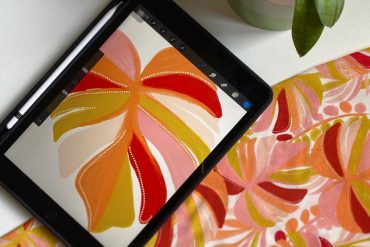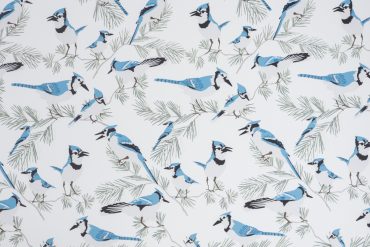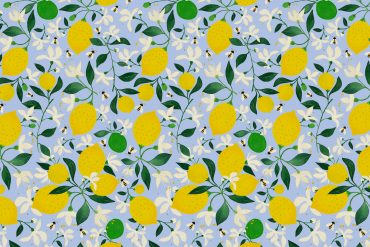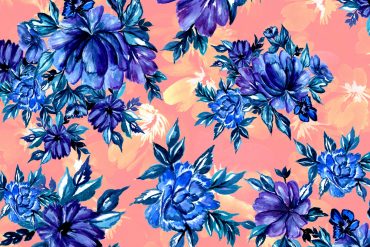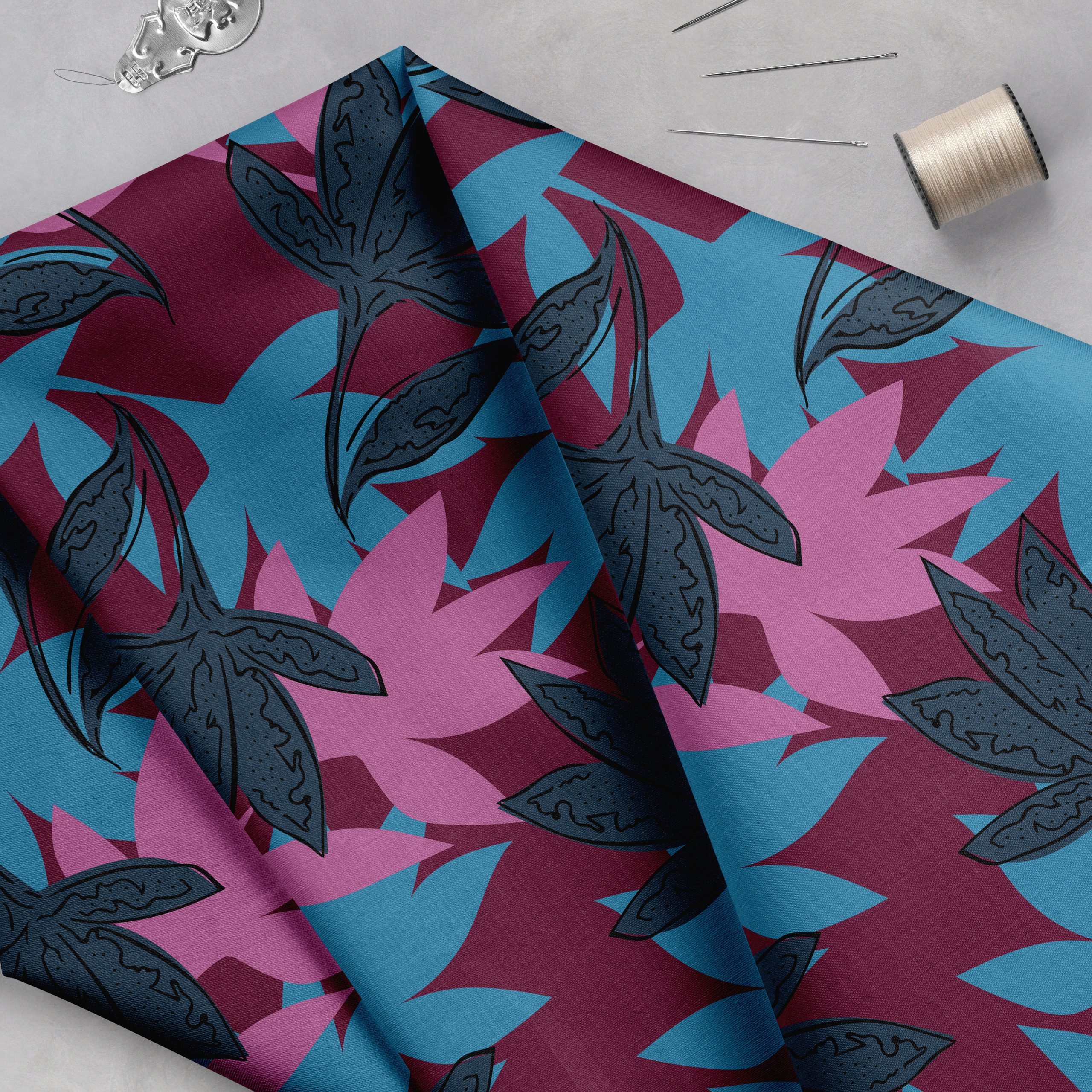Ellie Cashman is an artist and designer living in coastal Rhode Island who loves to create realistic floral paintings that become motifs for wallpaper and home decor textiles. Her designs are meant to serve as narratives of optimism and celebrations of beauty. Shop her website to add a unique and bold statement to a space you live or work. We have watched Ellie’s career bloom over a decade and featured her work before. We are thrilled to have her as a guest expert in the Textile Design Lab on June 23rd at 1pm EST to speak about crafting a daily creative habit that amplifies your unique point of view, designing for home decor products, starting a design business, and more!
What led you to discover your distinct style? How did you train to paint like the Dutch Golden Age painters?
I have undergraduate and graduate degrees in Painting and planned to become a Painting Professor, but just after I got my MFA, I ended up getting married, moving to Europe, and becoming a Mom (all in the same year!) Suddenly, I was living in Amsterdam, in a tiny apartment with a newborn and no dedicated workspace, so toxic paints and solvents got switched out for working digitally, simply because it was safer, took up less space, and was more conducive to working in short bursts, between nap times 🙂
At the same time, deep down I still identified as a painter, and I was living a mile away from the Rijksmuseum, where many of the Great Master paintings of the Dutch Golden Age were on display. I was taking all that in as I was coming up with ideas for what I wanted to make with my new digital tools.
It became clear, in that period, that wallpaper is the perfect product for me because it’s like a painting but better – it doesn’t hang on the wall; it IS the wall. I have always felt I wanted to make work that was more accessible and could be applied/enjoyed in everyday spaces, as opposed to just in museums. I had always loved patterns and had incorporated them into lots of my paintings, so in those early years, as I was transitioning into being more of a surface designer, I was thinking in floral patterns. I trained myself in the software, in how to make repeats and a portfolio of designs (by taking Michelle’s amazing Sellable Sketch and Ultimate Guide to Repeats courses, of course!)
I began working with an agent who sold my designs at trade shows, and posting my work on Pinterest. Responses on Pinterest were so positive that I decided to find my own manufacturer and set up my own site, take my own orders, etc. Because I spend so much time on my designs, working with an agent wouldn’t have been a good option for me long-term.
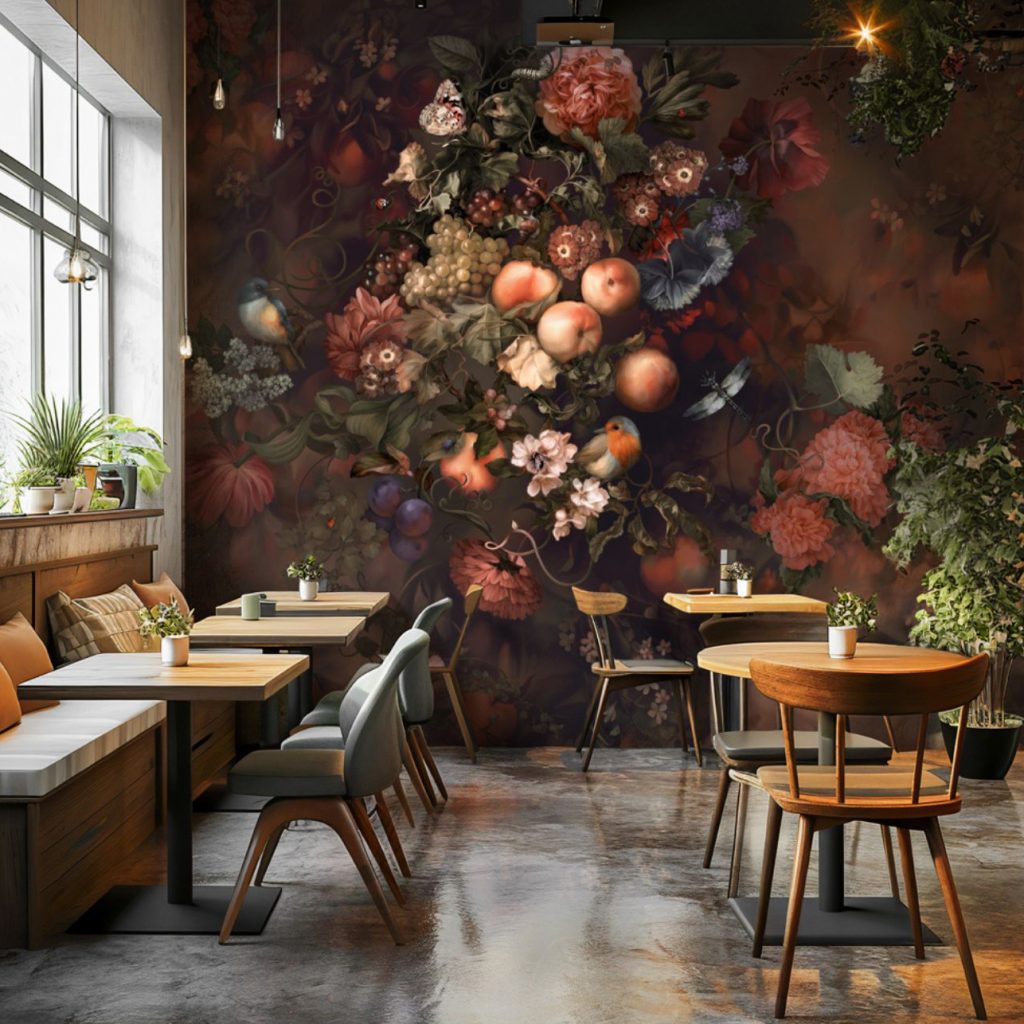
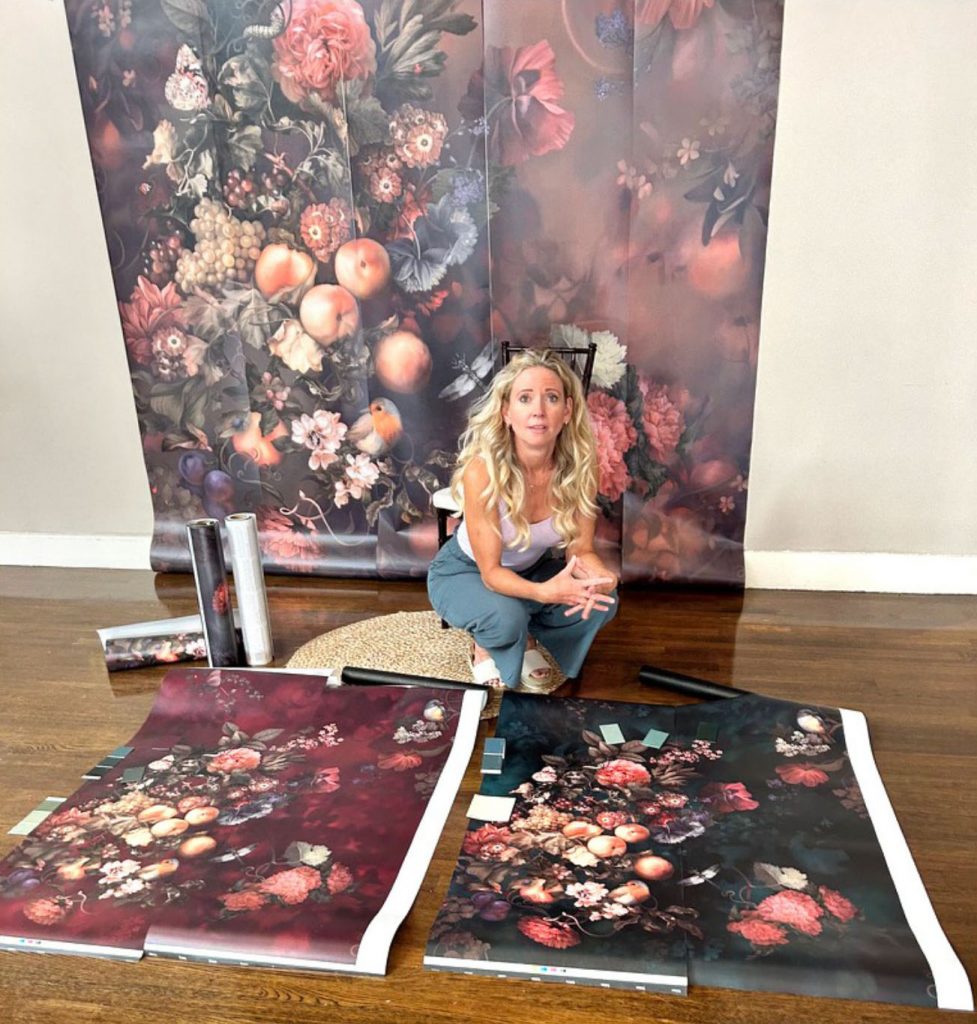
Ellie with the first proofs of Dark Botanical (newest design)
Does completing a print still take you 6-12 months, or have you found ways to speed up your process?
No, thankfully! I’m managing my perfectionism much better these days 🙂 Also, when it was taking me that long, I was working mostly digitally. Now, twelve years after starting Ellie Cashman Design, I’m back to working in oils as much as possible. Funnily enough: the opposite of what I would have expected is true: For me at least, the process goes so much more smoothly/quickly when I make the initial designs by hand. I find I almost always get stuck/lost when working digitally. If I haven’t taken the time to do the important prep work: drawing from life, taking my own photos, making lots of quick paintings, mixing different palettes, I’ll discover half- or three-quarters of the way into the process that I haven’t laid enough groundwork. So it ends up costing me later on. But for right now, I’m working on a new design that I hope to have finished in about a month. It will be a combination of about 4 – 6 paintings that I will then compose/put into repeat using Photoshop. These days, I postpone the digital work as long as humanly possible, which counterintuitively speeds up my production time immensely!
What are your thoughts on using AI in design or for your business? Have you found any tools helpful?
I’m not categorically against AI by any means, but I think we have to be very intentional about the way we use it. Most of the image-generating software is disappointing at this point, but it won’t be long before that’s no longer the case. Then there will be AI functions that can spit out designs in repeat faster than we can make our morning coffee and sit down at our desks to get to work. And there will be a lot of big retailers and a majority of consumers who will be really happy about cutting production time/costs that way. I do think we need to be aware that that’s around the corner, and if we want to continue making designs because we enjoy it and because we think we have something unique to offer the market, we have to be prepared to make the case for EXACTLY what it is we have to offer that AI can’t. How do we make that case? My opinion is that we need to be very explicit about the thoughts/concepts/personal histories, and artistic processes that go into our designs. We have to share our stories and explain why and how we make what we make. Providing insight into the human, artistic experience, the story behind the designs, will help people connect to imagery more deeply. We’re evolutionarily programmed to respond to beautiful things that other people make, that say something to us about our own experience that words can’t capture, and I don’t think that’s going away. I just think there is going to be a tsunami of AI-generated, very mediocre imagery out there, and we will have to work hard to compete with it. At the same time, a good way to use it to our advantage is in the ideation phase. The one tool I’ve discovered and just loved is Canva’s AI Image Generator. You enter a prompt and select the style you want (I always use Line Art) and it generates something decent. I like to use it to get ideas flowing and then build off of them. I would never feel good though, about taking something AI-generated and selling it 1:1 as my design.
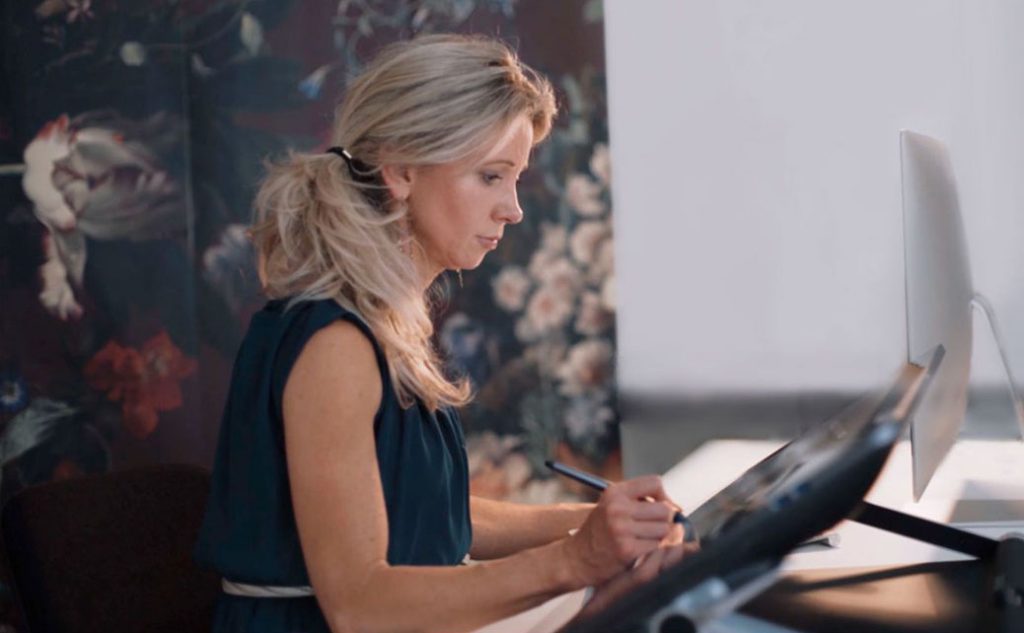
Ellie at her Wacom tablet. Golden Age Wallpaper proofs in the background
How do you make connections with interior designers? Do you attend trade shows?
I have never attended a trade show as an exhibitor, though I’ve visited a few just to scope things out. Designers have found us over the years and we of course follow up and send samples to designers who have been loyal to us. That is a minimal cost compared to traveling to a trade show, setting up a booth, etc. Also, we obviously stay in touch with designers on Instagram, responding when designers post projects using our wallpaper and sometimes reposting those projects. We do blog features on some of our favorite designers, etc. So I would say in the social media age it’s hard to justify the expense, at least for a small company like ours, of physically having a presence at a trade show.
What is exciting you about the home decor market right now? What are some of the challenges of designing home decor products?
Well, what I have really enjoyed about the home decor market is watching it grow to include so many smaller brands and so much more variety. I think that will continue to be the case now that e-commerce and social media make it possible for smaller brands to compete in a large market. I think the other side of the sword is that there is now so much out there; it’s only getting harder and harder to stand out and stay relevant. But that goes back to my earlier point about AI and on getting clear about exactly what your style is, what you make and why, how to stake your claim to that part of the market, and not try to be a generic, jack of all trades. I say go deeper/more niche, not broader/more generic.
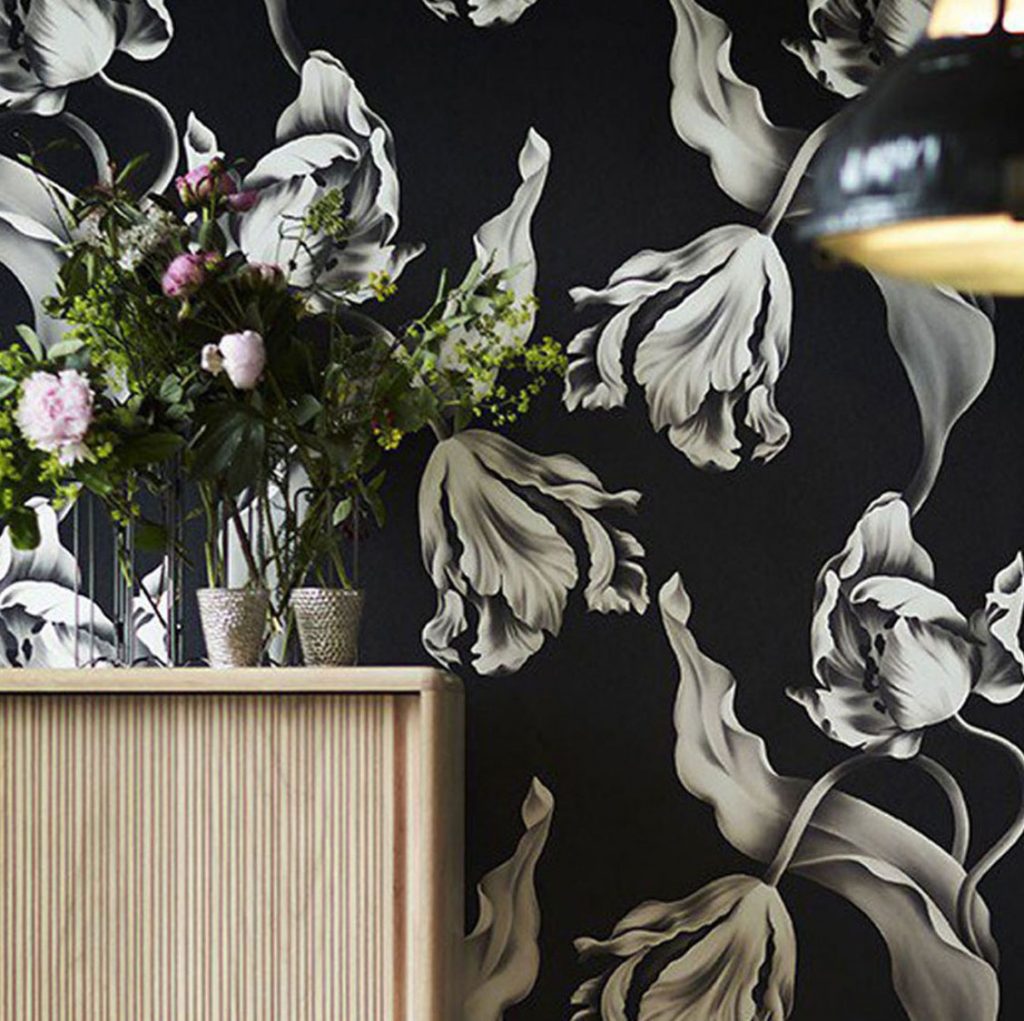
What decisions impacted your design business the most over the years?
Number one was going out on my own as opposed to working with an agent. One of the best decisions I’ve ever made! Number two is to work in this business with my husband, which has been a net gain, but not without its challenges 🙂 Most recently, I decided to go back to school and get another Master’s Degree, this time at RISD, in Art + Design Education. While there, I also took two of the best painting classes I’ve ever taken in my life. I’m fully back into working with oils now, and loving it. I just graduated from that program and have a grant from RISD to continue my research (into the mental health benefits of daily creative practices) through the Fall. So while making art and wallpaper will always be part of my life/practice, I recognize that I also have this other part of myself that needs developing, too. This, mostly because art and design have been such a positive part of my own life experience, and I want to find a way to offer those opportunities to others, because the artist/designer’s life isn’t necessarily easy. We all need some people encouraging us along the way. But I would unequivocally encourage anyone to go for a life full of art and design, if it’s something that’s calling to you!
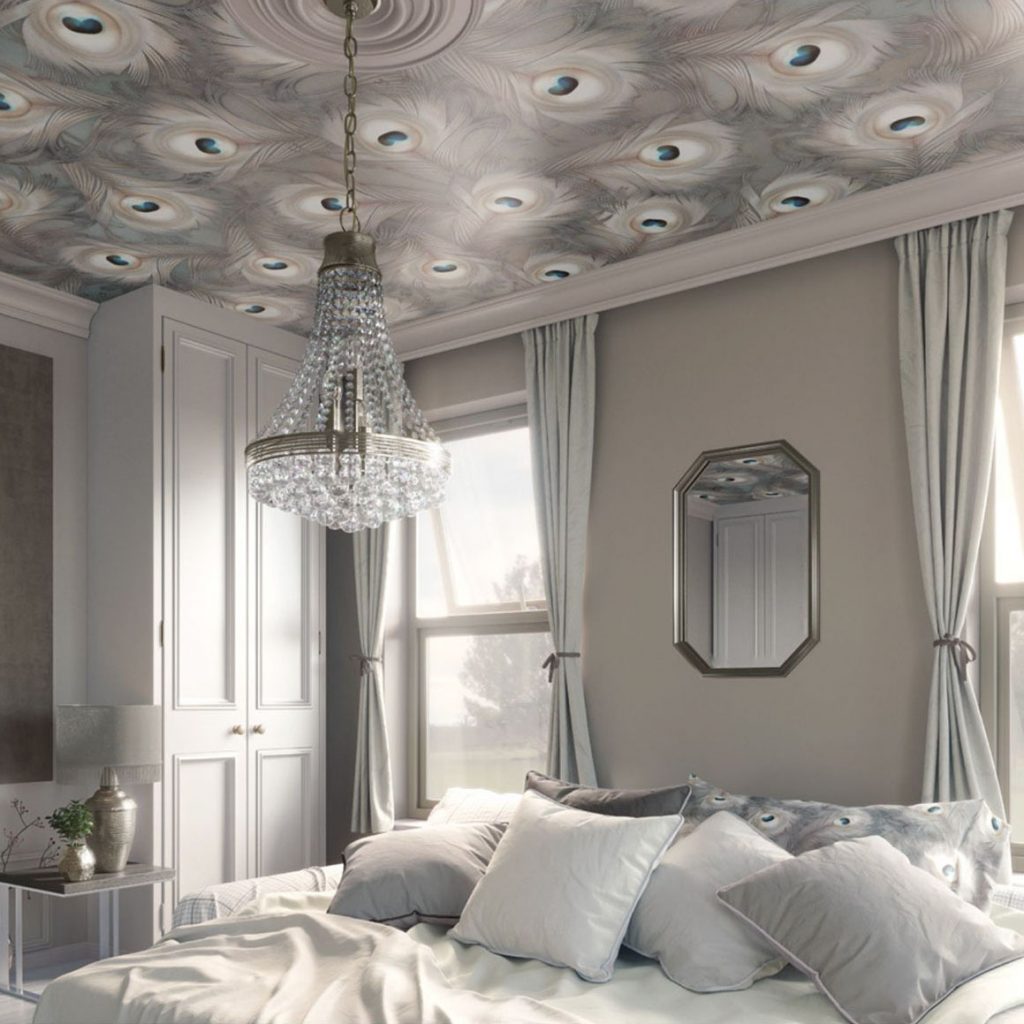
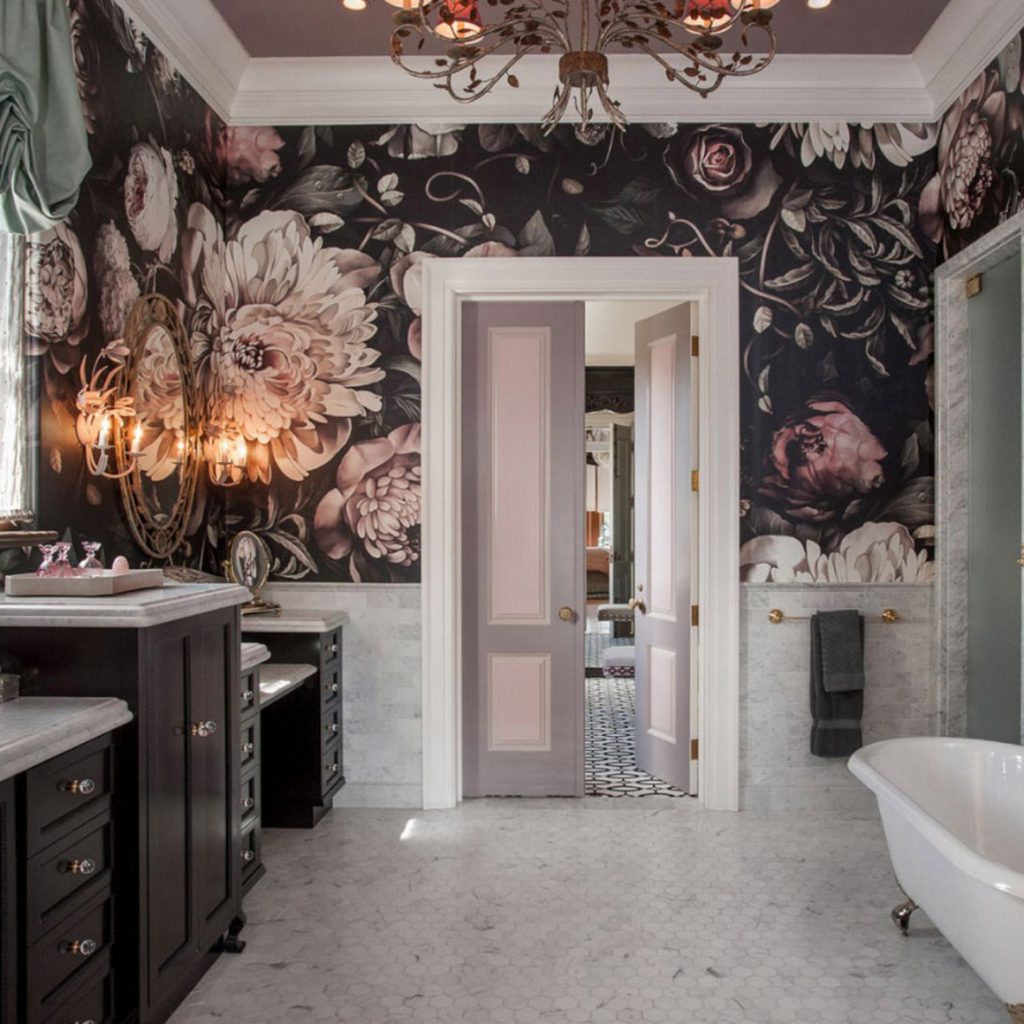
What method of marketing drives the most customers to make purchases?
For us, the most successful method of marketing hands down has been word of mouth, and/or when other people post about our products on their blogs/socials. This often happens organically (we have hardly ever worked with influencers) and the more organic, the better! We have invested very little in marketing and haven’t really gotten a good, solid sense of whether our own efforts (social media posts, ads) pay off. If anything, Pinterest seems to be the best social media platform for us. I continue to be disappointed by Instagram, and just generally a little on the cynical side when it comes to marketing in general. I think it’s about creating a great product, a great presentation, and about building great, real-life relationships with designers and collaborators. I think the future holds a movement “back” from doing so much online, anonymously, algorithmically, etc.
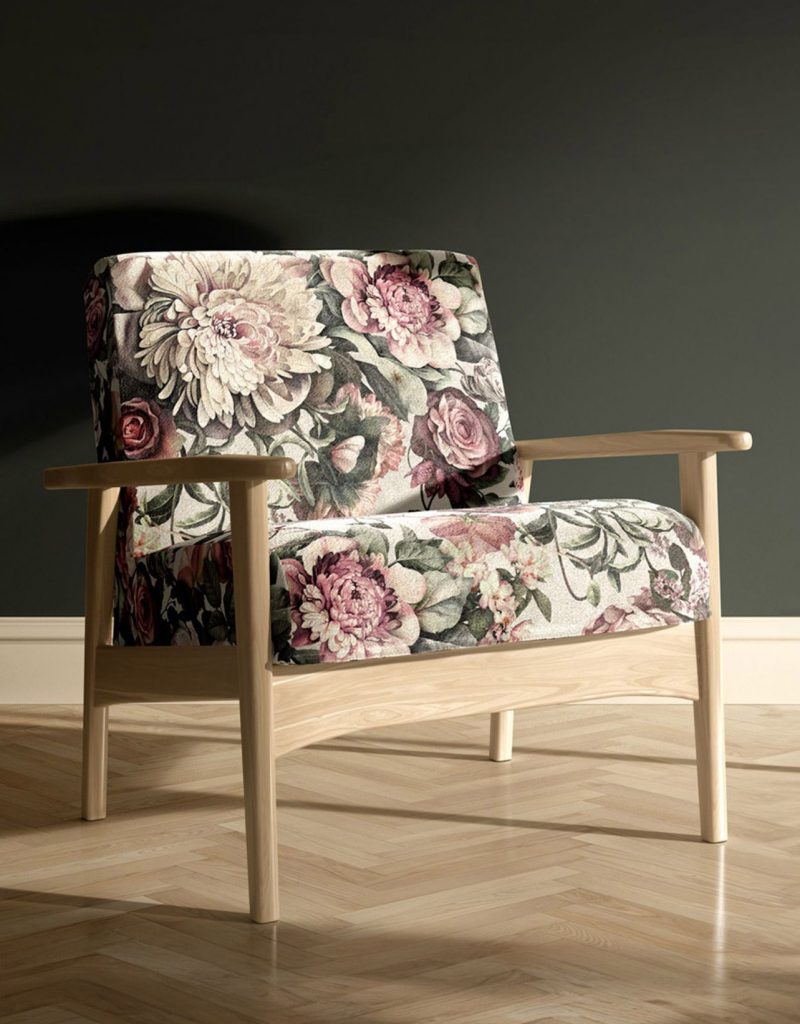
What can people expect to learn from the training you will be offering to our Textile Design Lab members?
I’m so honored and excited to be asked to do this training, and also a bit humbled! I will give a brief talk about my personal experience and present a slide show documenting the steps I go through in my own process. I’m happy to answer any questions. I’m also very curious to learn about other people’s processes – what works for you? Are there any struggles that you’re encountering? I’m hoping we can have a good, open, productive discussion. Finally, I will share a printable sketchbook/journal with a few prompts and exercises for really honing in on what your personal style is. I created this to help you develop your own unique artist/designer voice. This, because I think when we know where we stand and what we – uniquely – have to offer, the world will see it, and respond! I would put my bets on that artistry/authenticity any day, over the algorithms 🙂
I really hope there will be lots of people joining in for this presentation and discussion, and I am looking so forward to it! Find out more about the TDL here.




